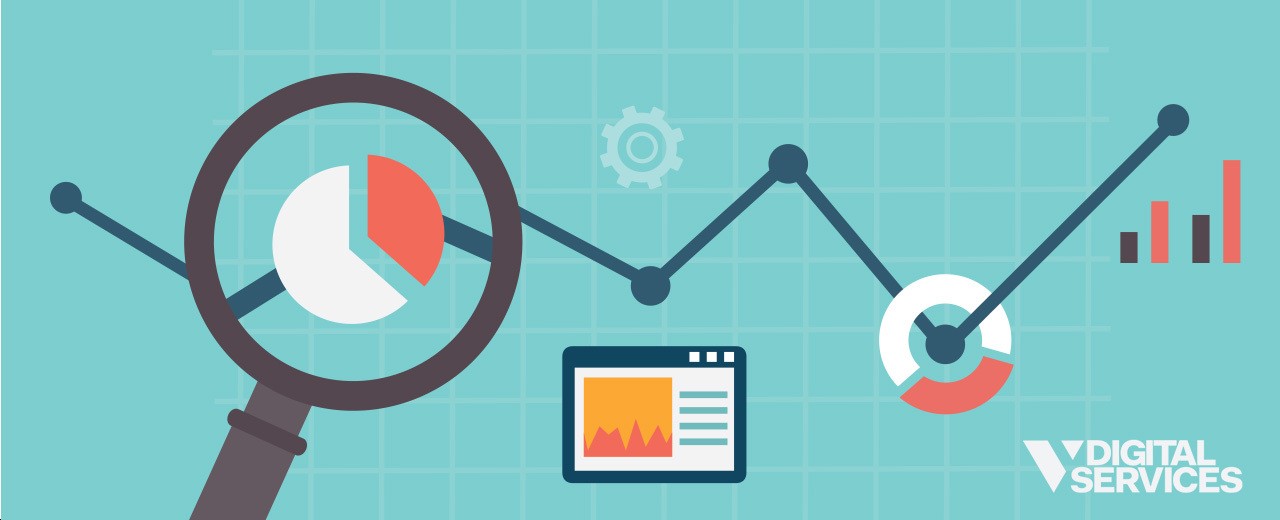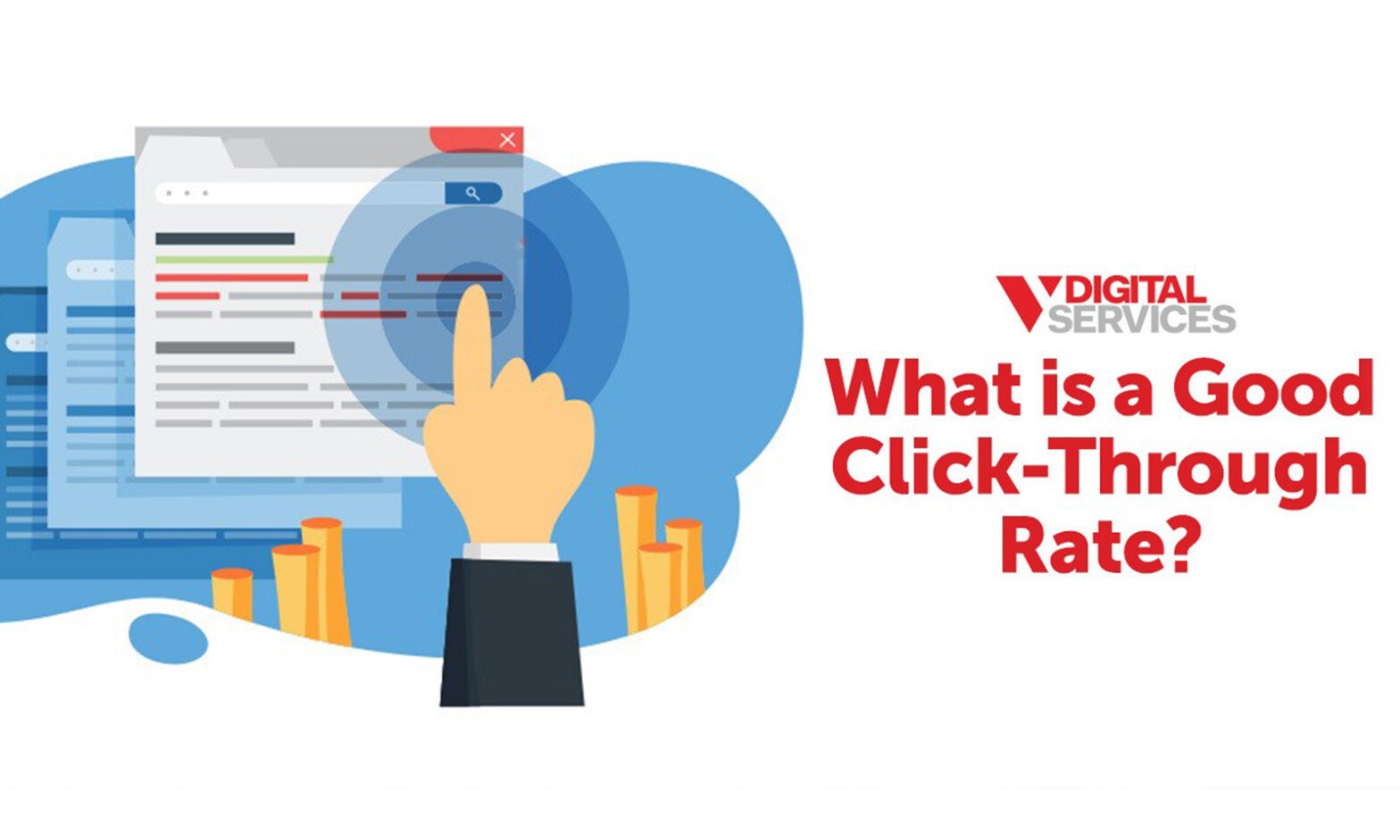Metrics are key in determining how effective your digital strategy is and how (and what) you need to improve. And although there is an array of useful data worth examining, one of the most helpful is your average click-through rate (CTR).
Before you can figure out if your click-through rates are up to par, you need to know: what is a “good” click-through rate? In other words, what does success even look like in terms of an excellent CTR?

In this guide, we will be answering that and many other important questions so that you can make the most of this essential metric. We’ll be addressing:
- What is CTR, and what does it mean?
- How do you measure click-through rate?
- What is a good CTR?
- Which factors influence click-through rate?
- How do you set goals for CTR?
After reading this information, you’ll know exactly where your CTR should be – and what you need to get there.
What is Click-Through Rate (CTR)?
The click-through rate is the ratio of the number of users who click a certain link vs. the total number of users who view the link.
CTR is important because it’s not necessarily how many people see an ad (or listing, keyword, etc.) that matters. Rather, it’s how many people click through to see the content on the other side.
How Do You Find Click-Through Rate?
Most service providers include exact click-through rates in your analytics reports, so you don’t usually need to worry about calculating it on your own. But even so, calculating the click-through rate is very simple.
The basic equation for click-through rate is
(Total Number of Clicks) / (Total Impressions/Views) = Click-Through Rate.
You’ll end up with a decimal number, which you then just convert to a percentage for CTR.
Here’s a quick example of the equation:
Let’s say you check the metrics on an advertisement you’ve had running for a week or so. You can see that it has received 55 clicks and 5,200 impressions.
55 clicks / 5,200 impressions = 0.0105 or 1.05%
The CTR for the ad is 1.05%.
Why Do Click-Through Rates Matter?
So, you now know that CTR equates to the percentage of users that saw your ad and then clicked on it. But why is the click-through rate important?
Aside from demonstrating exactly how effective a specific campaign is or isn’t, CTR also directly impacts your Quality Score. Quality Score is how Google rates the quality and relevance of PPC ads (and keywords). The Quality score helps determine your cost-per-click (CPC) and factors into your overall ad rank. And the better your Quality Score, the more effectively you can utilize your ad spend.
Several factors affect your Quality Score, but your CTR is a big factor. Not only is the Quality score an essential metric in and of itself, but it also has the power to create a ripple effect that can help or hurt your marketing efforts.
What is a “Good” Click-Through Rate?
Now, we’ve come to the question you’ve been waiting for: what is a good CTR?
Understandably, many people want to have a specific percentage to use as a reference for a competitive click-thru rate. But it’s not quite that simple.
Statistically speaking, CTR naturally varies on a case-by-case basis. You can expect to see differences among industries, from campaign to campaign, and even between different keywords. There are so many factors, small and large, that play a part in your overall CTR. Meaning that as much as we all wish there were a “magic number” for a high click-through rate, it’s more complex than that.
But just because we can’t tell you how to get the highest click-through rates of all time – or even exactly what the highest CTR possible is – that doesn’t mean that you can’t glean plenty of knowledge from the available figures. And from there, you can devise smart ways to improve CTR to suit your needs and goals.
Average Click-Through Rate for Google AdWords
If we look at the Google Ads industry benchmarks compiled by WordStream and updated in 2022, here’s what we know.
The average CTR across all industries on Google AdWords is 3.17% on the search network. On the display network, the average CTR is 0.46%.
Average CTR By Industry
The same resource from WordStream also shares averages for CTR across 20 major industries. These figures can help gauge what a good CTR looks like for your business/industry, but they also illustrate how CTR can vary significantly.
| Industry | Average CTR (Search) | Average CTR (GDN) |
| Advocacy | 4.41% | 0.59% |
| Auto | 4.00% | 0.60% |
| B2B | 2.41% | 0.46% |
| Consumer Services | 2.41% | 0.51% |
| Dating & Personals | 6.05% | 0.72% |
| E-Commerce | 2.69% | 0.51% |
| Education | 3.78% | 0.53% |
| Employment Services | 2.42% | 0.59% |
| Finance & Insurance | 2.91% | 0.52% |
| Health & Medical | 3.27% | 0.59% |
| Home Goods | 2.44% | 0.49% |
| Industrial Services | 2.61% | 0.50% |
| Legal | 2.93% | 0.59% |
| Real Estate | 3.71% | 1.08% |
| Technology | 2.09% | 0.39% |
| Travel & Hospitality | 4.68% | 0.47% |
Notice how the highest CTR (6.05% for dating and personals) comes in nearly four points above the lowest (2.09% for technology). Does that mean that technology has a “bad” CTR and dating/personals have the “best” CTR? Not at all. It simply translates to foundational differences in marketing in each of those industries.
Is a High CTR Always a Good Thing?
Even though a high click-through rate is usually a positive, there are certain situations in which it can actually be a red flag.
It’s not considered a good thing to achieve a high CTR for a keyword that isn’t relevant to your business or one that isn’t going to produce leads, sales, and other measurable benefits. Here’s why:
- You’re paying for all of those clicks, whether they’re generating leads/sales.
- A lot of clicks result in a higher ad spend.
- Sometimes, you can be generating clicks on a keyword that is priced so high that you won’t be profiting even if you earn conversions.
- Unproductive clicks and irrelevant keywords are an expense that doesn’t translate into a worthwhile return on investment (ROI).
You want to work towards higher CTRs on affordable and relevant keywords. Meaning a “good” CTR consists of two elements: first, thoughtfully-targeted keywords, and then a solid rate of clicks on those specific ads.
Factors That Influence Click-Through Rates
Hoping to improve your CTRs? Start by understanding some of the many factors that can contribute to or detract from your CTR, including
- URLs: One of the most often overlooked factors in CTRs is URLs. Ideally, every one of your URLs should contain a relevant keyword (short-tail or long-tail).
- Long-tail keywords: When comparing long-tail vs. short-tail searches, there tends to be a higher CTR for long-tail searches.
- Meta descriptions might not directly affect the search algorithm. Still, meta descriptions do serve a role in your CTR.
- Industry: As illustrated in our data from WordStream, there are huge variances in CTR rates among industries across all marketing channels.
- Time of year: Depending on your business type or industry, certain parts of the year may have a higher demand for your products/services.
- Content-type: Different marketing channels can have higher or lower CTRs than others.
- Ad position: Ads with higher positions will naturally generate higher CTRs, simply because of their more prominent placement.
Setting CTR Goals
If there’s such a wide range of CTRs, how do you define your own CTR goals? Ultimately, it comes down to your specific needs, objectives, and how high you want to aim.
A CTR resource from WordStream states that the top 15% of Google Ads achieve a CTR twice as high as the “expected average.” For those in the top 5% (about 1 in 20 advertisers), their CTR is three times higher; and the top 1% of Google Ads have a CTR that is a whopping six times higher than their estimated industry average.
Before you start feeling intimidated by those numbers, take a moment to get a little perspective. While it’s always admirable to shoot for the stars, devising a realistic strategy for success is always the larger goal – you don’t have to land in the top 1% to consider a campaign a win for your business.
How to Get a Higher CTR
When you work with the V Digital Services team, our collaborative process considers your goals, challenges, and needs and melds that together with our data-driven strategies tailored for your business. We will come up with a target goal for your CTR and a detailed plan for achieving it. That’s the best way to pinpoint a specific CTR that you want to work towards and the roadmap to getting there.
But in general, there are specific characteristics that tend to be shared by the advertisers that regularly get above-average CTRs. These traits can be a solid jumping-off point for your own CTR strategy. When you look at advertisers that consistently knock it out of the park for CTRs, you’ll see that:
- Every keyword they use earns a high Quality Score.
- They reduce wasted ad spend by effectively implementing negative keywords.
- They have a high impression share.
- They typically target extremely specific long-tail keyword phrases rather than generic, short-tail options.
- There is constant account activity, highlighting their commitment to ongoing optimization and improvement efforts.
Together, these characteristics of the highest CTR advertisers give you a good idea of how to improve your CTRs.
Want to learn more? Let’s take a closer look to see how you can emulate some key traits in your own CTR strategies.
Choosing the right keywords for a high click-through rate
It’s no secret that not all keywords are created equally. But when it comes to CTR, keyword selection can have a particularly measurable impact.
- High commercial intent keywords, which show users’ high level of purchase motivation, typically equate to a higher CTR. Some examples of high commercial intent keywords are “best tax preparation software” or “kitchen remodeling companies near me.” These show that the user is ready and willing to make a purchase, whereas a keyword phrase like “Judy Garland career” does not.
- Branded keywords, including those that reference your brand, partner brands, and biggest competitors, can boost traffic and CTR. When consumers in your target market are searching for what you have to offer (and when they’re ready to make a purchase), they’ll likely be searching for brand names – making these keywords an opportunity you don’t want to waste.
- Local keywords are also linked with successful CTRs because local search users usually have a reasonably high commercial intent. So, if someone is searching for “Denver personal trainers” because they’re ready to start a new exercise routine, you want to make sure they can find your business.
- You should avoid informational keywords when possible, specifically those that would be used by individuals looking for basic information/facts, rather than those who have an intent to buy. For example, “What is a smart fridge?” can attract users who are simply interested in the topic, not those who want to pay your company to install their new smart fridge, resulting in a lower CTR and wasted ad spend.
Remember that quality content will always reign supreme.
It’s easy to get caught up in the technicalities of improving CTR and look solely at various metrics and similar details. But above all, creating engaging, emotionally evocative, and original ad content is one of the best ways to boost CTR.
When an online search user faces a search results page, most ads look virtually the same. Considering that those ads are probably all from competitors within a very specific niche, who may have modeled their ad strategies on each other, that’s not too surprising. So, if an ad stands out from the crowd with interesting, relevant, and unique content, it can catch the user’s eye and get their click.
Of course, learning how to create content that engages your audience isn’t something we can adequately cover here – that’s a topic for a different day. At the end of the day, if you need help with content creation, the V Digital Services team has you covered.
Make use of metrics.
If you don’t know what works to increase CTR, how can you chart a path towards improvement? Answer: you can’t.
So many businesses underestimate the value of metrics, but the data provided on your digital dashboard is worth its weight in gold. When you tap into the data, you can see which of your campaigns are getting the highest CTRs, and which ones are falling surprisingly short. Then, you can compare each to see how they differ and begin to formulate a hypothesis of sorts. Once you have this hypothesis, you can test it!
As you optimize and adapt your approach, continue to use the data to guide your efforts. These methods aren’t just a savvy approach to CTR but marketing best practices in general.
Achieve Your Goal CTRs with a Personalized Strategy from VDS
You’ve learned a lot about click-through rate and what it means for your business and its online presence. But even so, there’s so much more to discover.
Contact the expert team at V Digital Services for more information about how to increase CTR and achieve sustainable success for your business, starting right now.
Image Sources: Inspiring / Griboedov / fizkes / Eightshot_Studio / Faizal Ramli / Freedomz / Rawpixel.com







 PREVIOUS
PREVIOUS